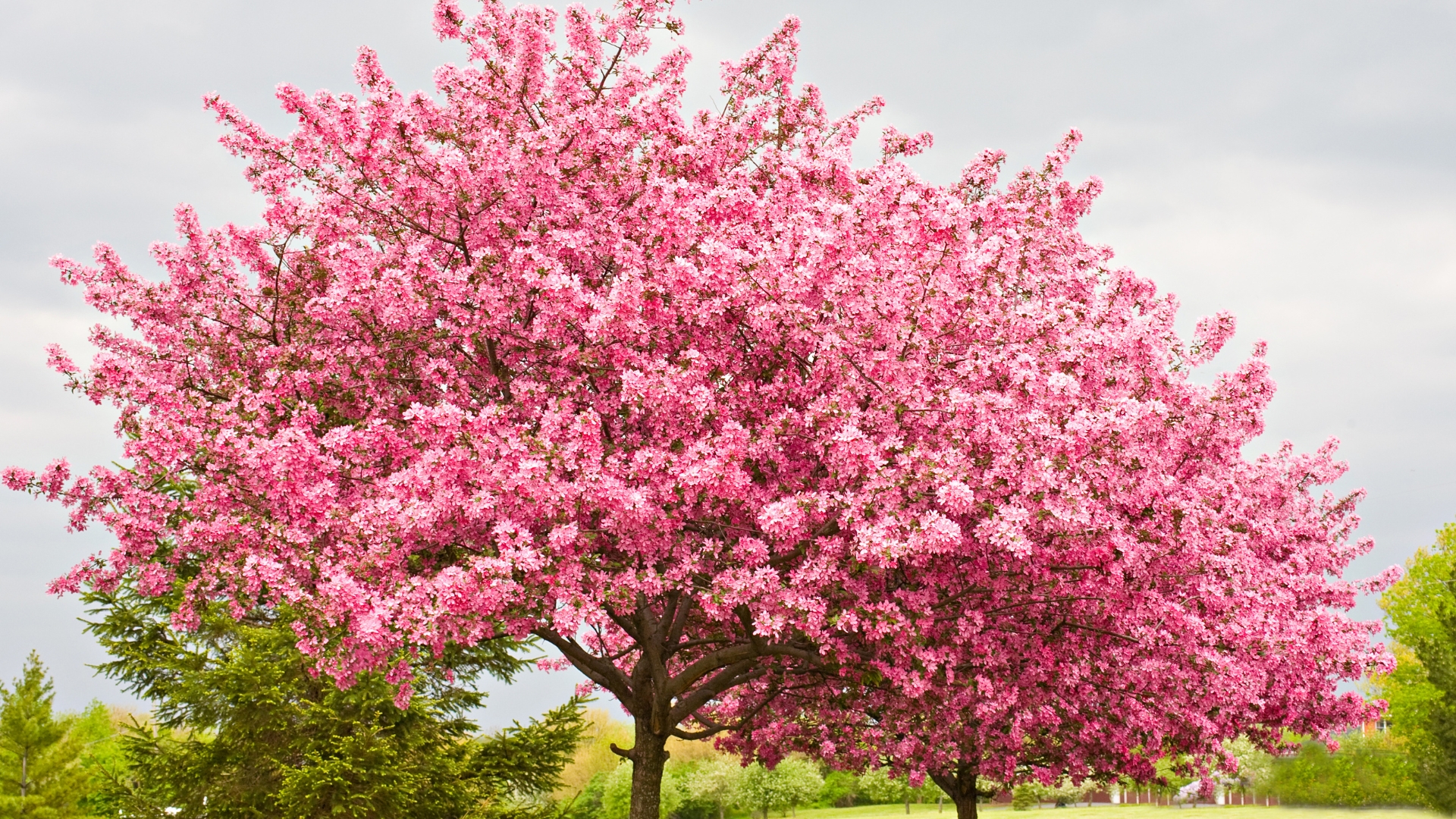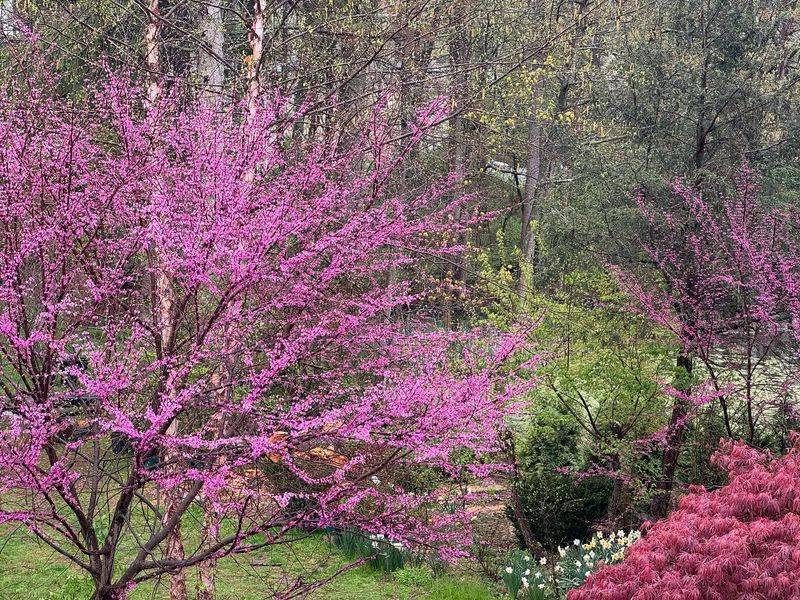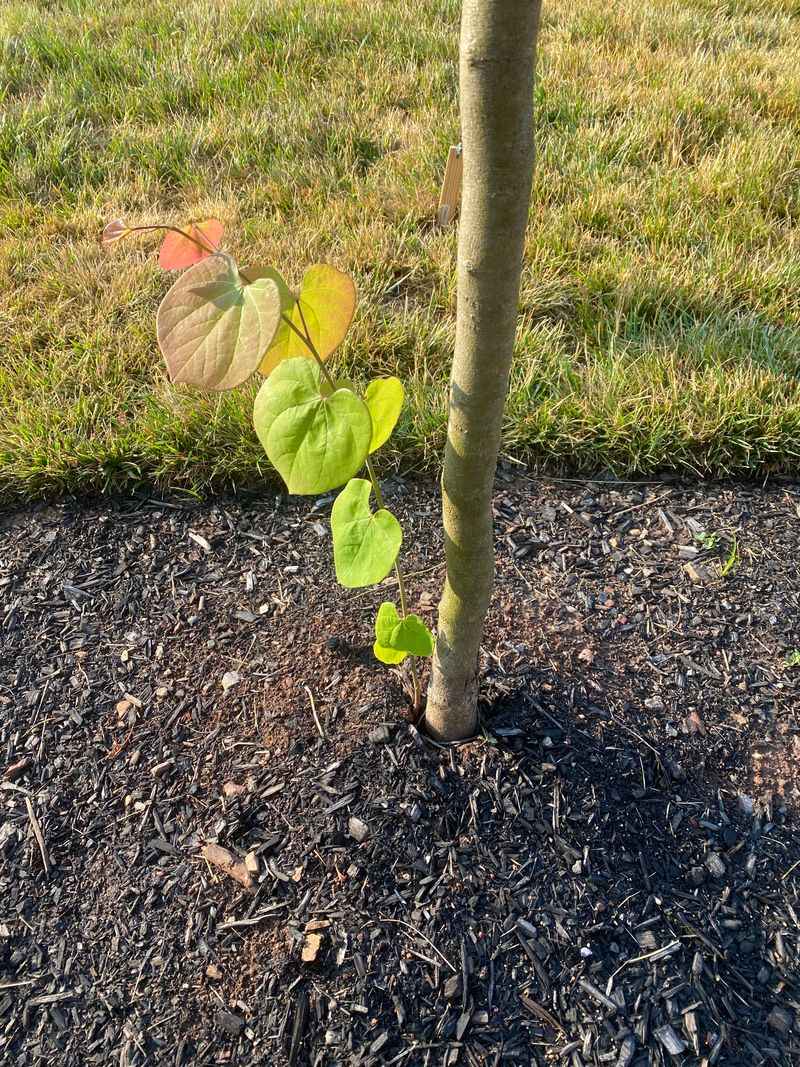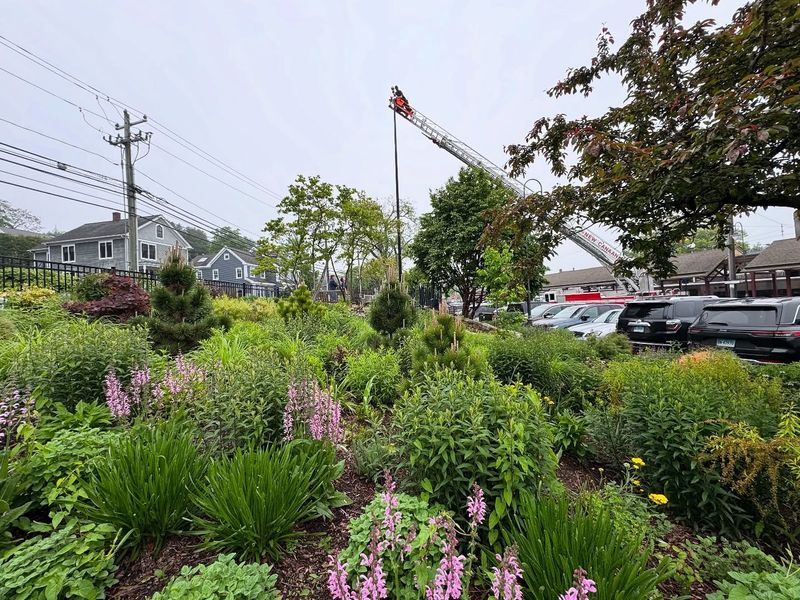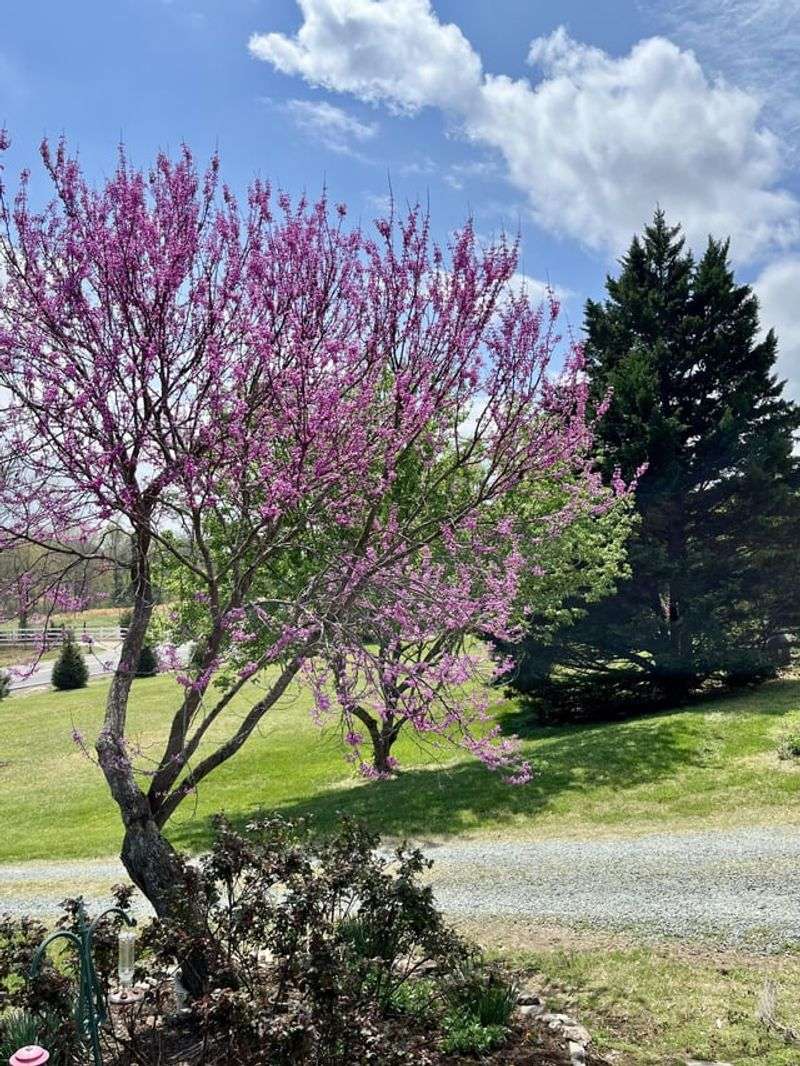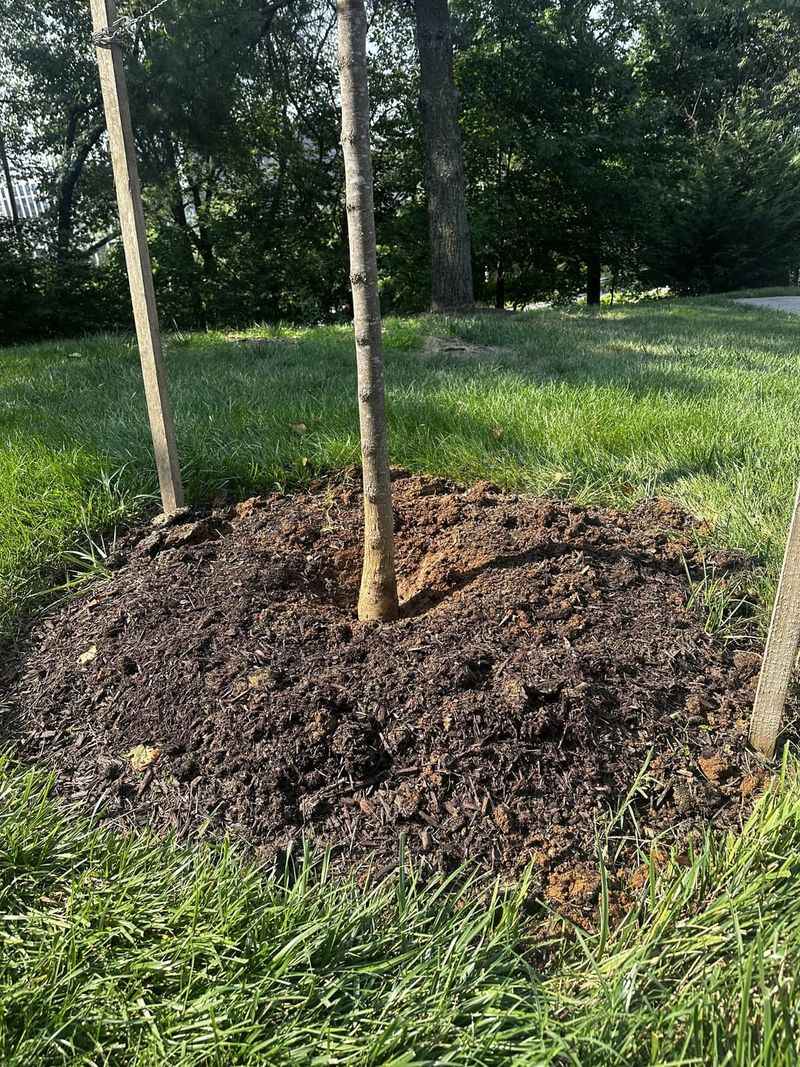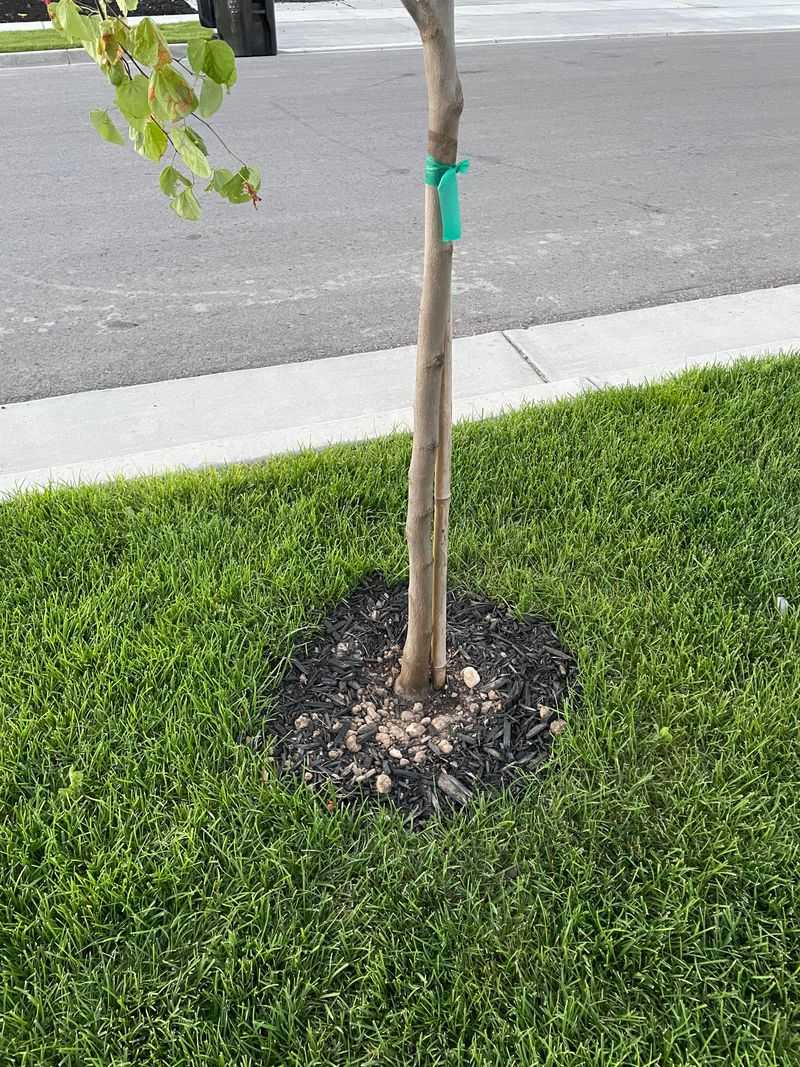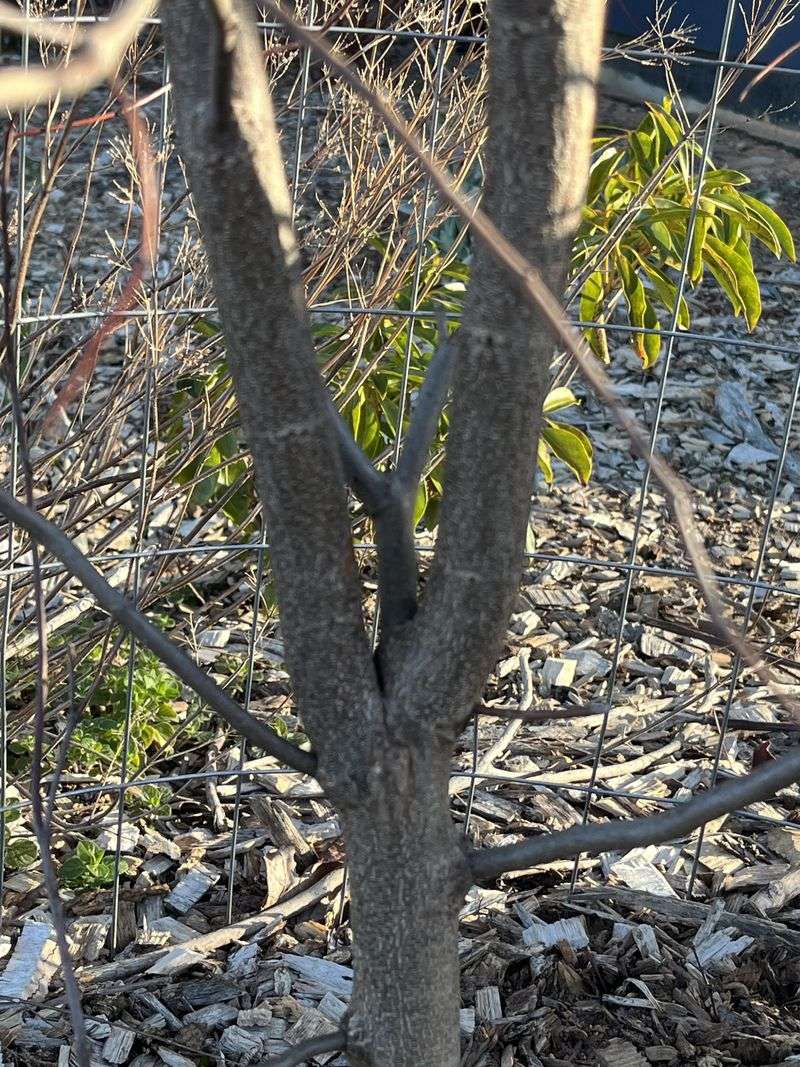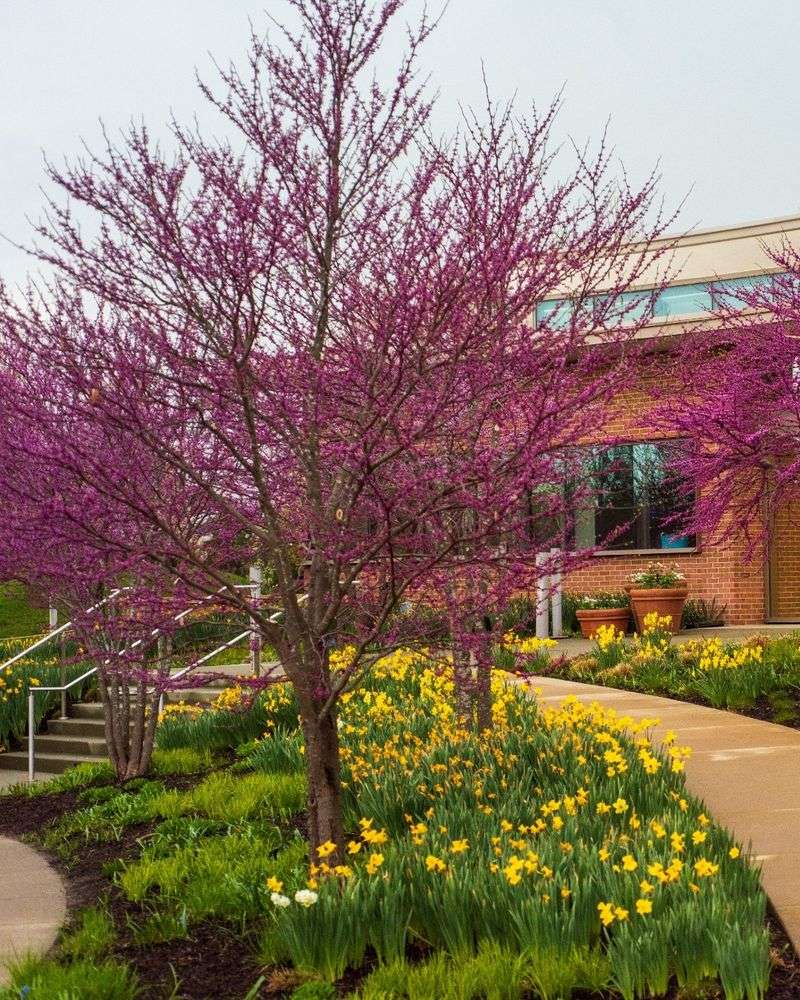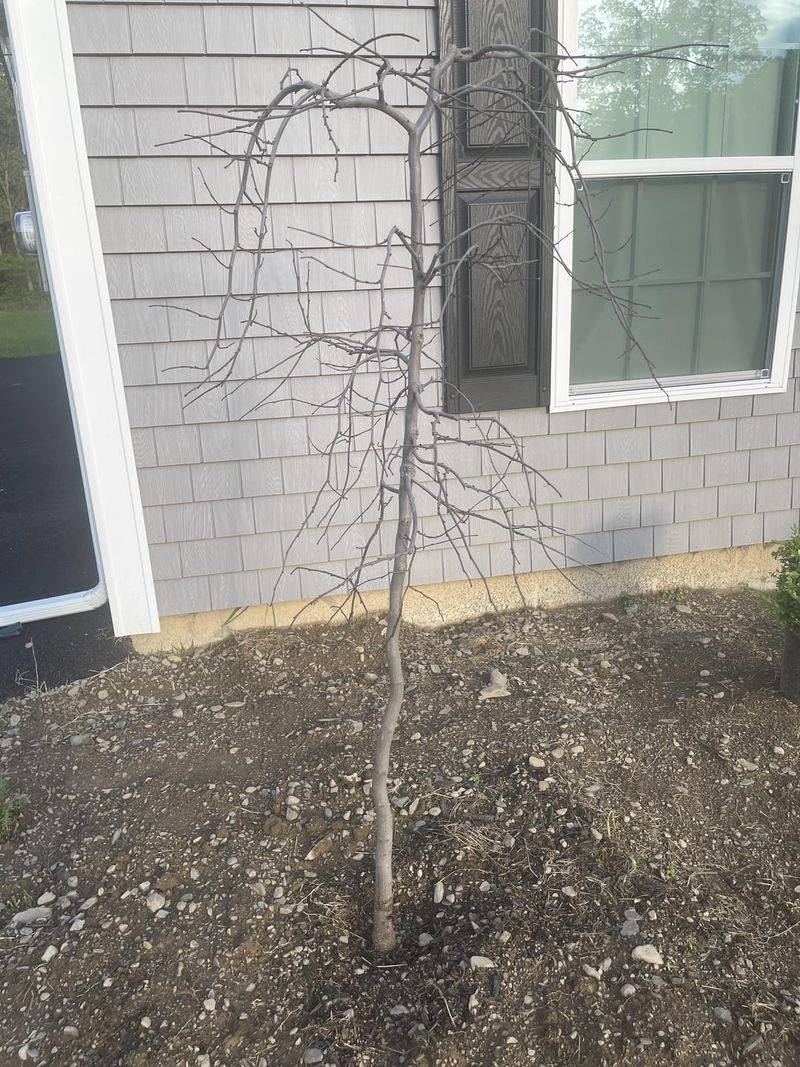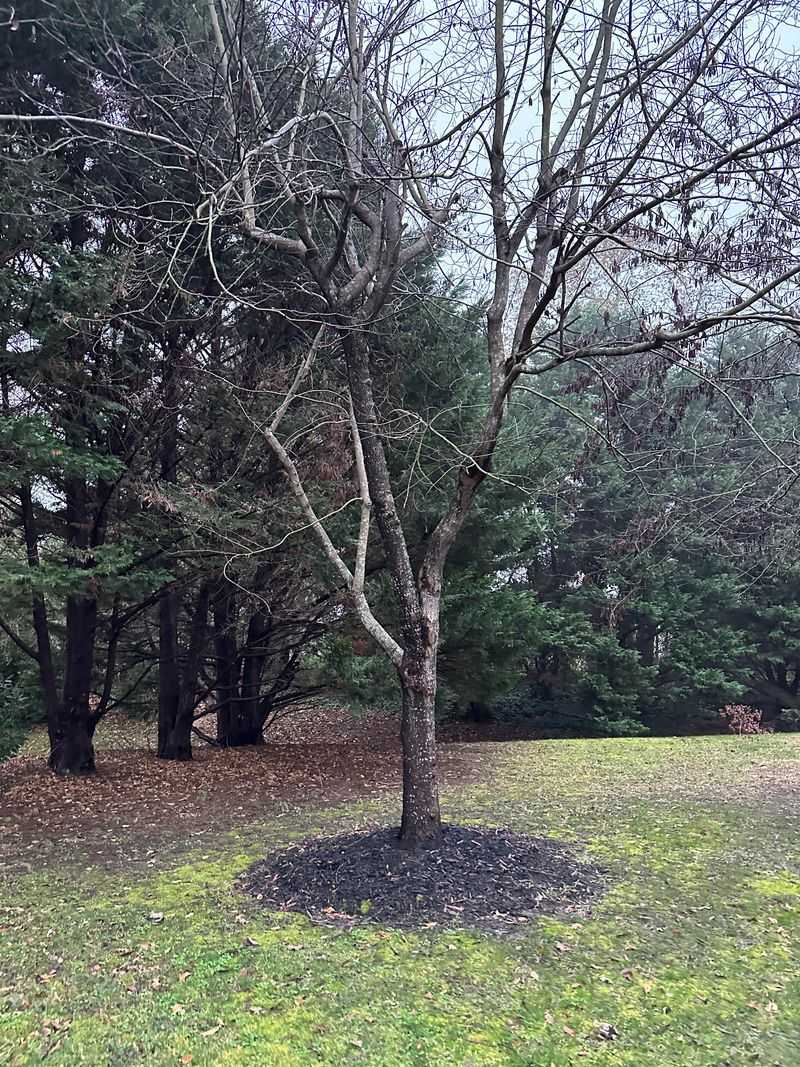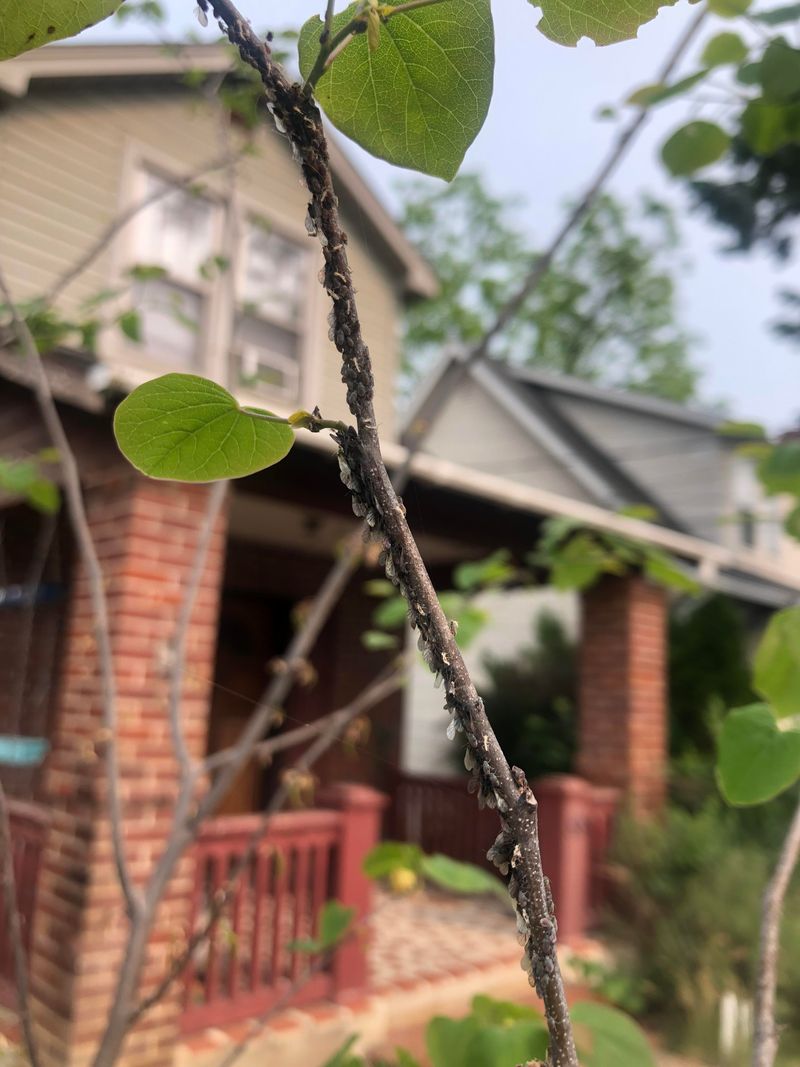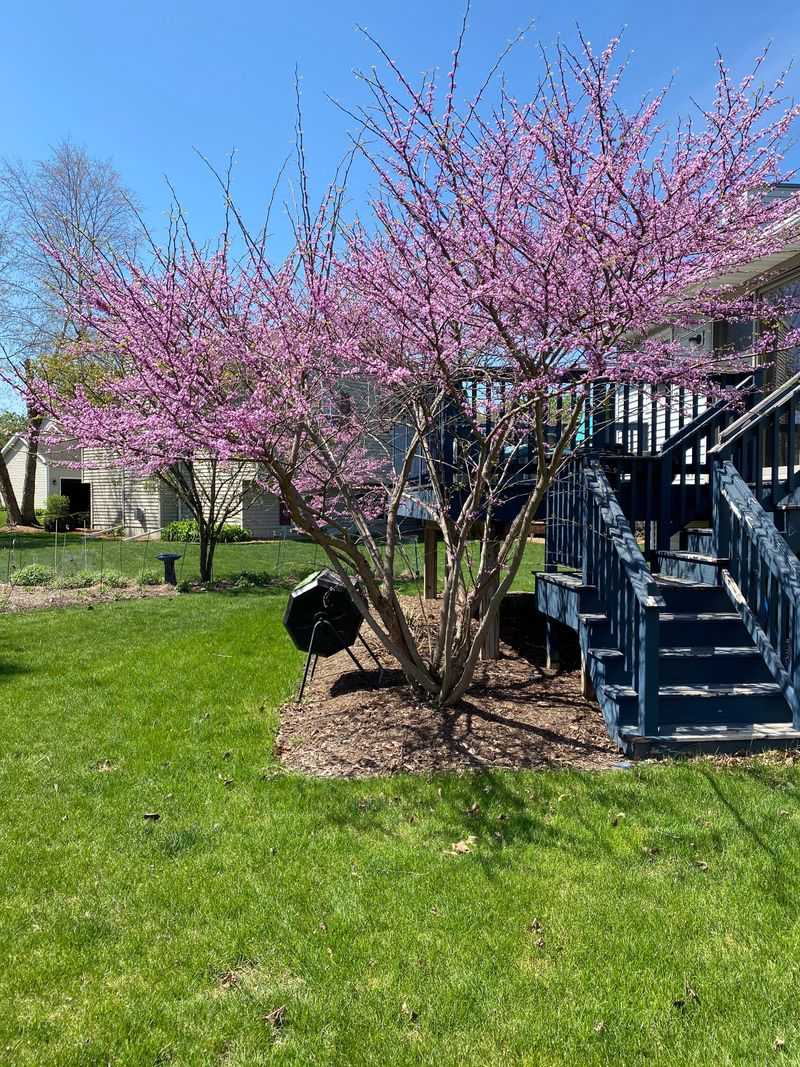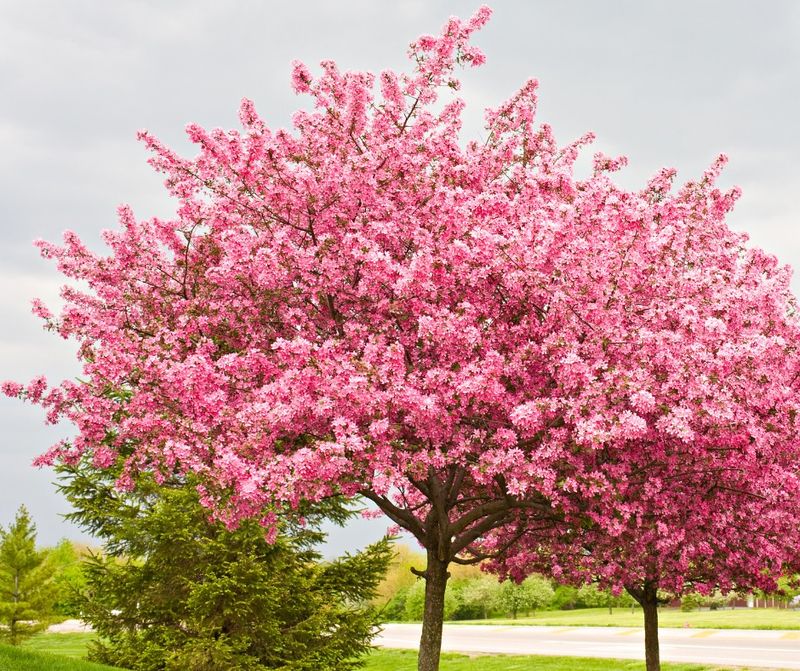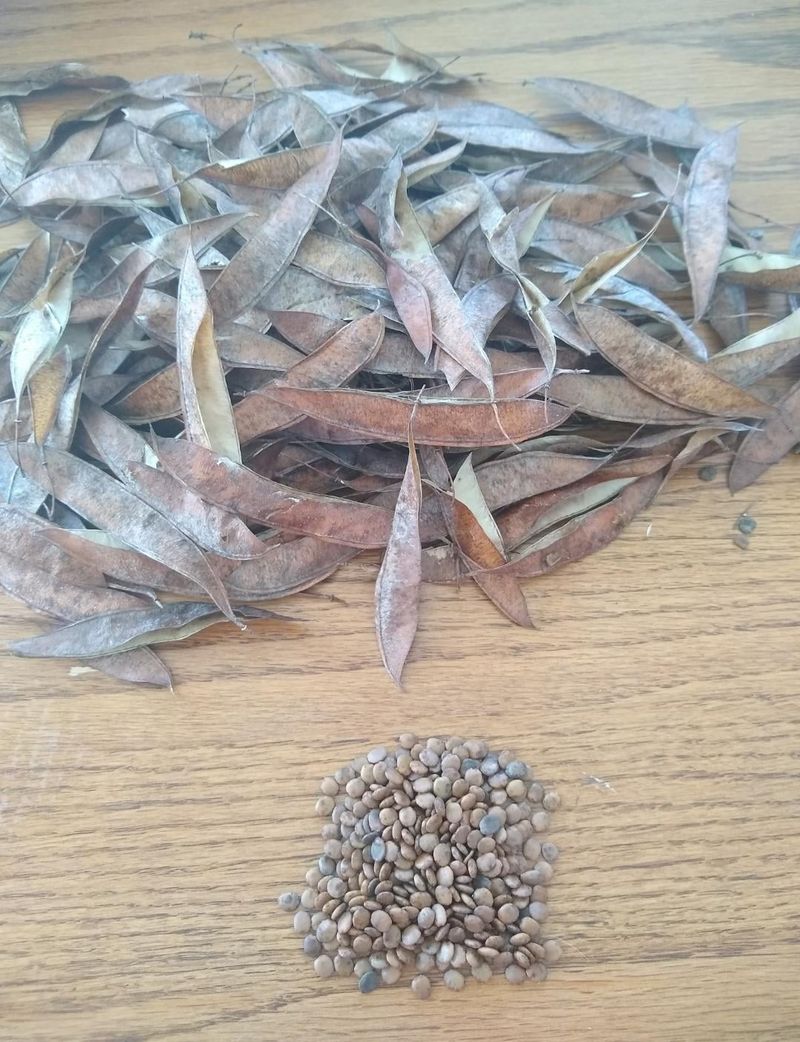Eastern redbuds are the kind of trees that make you stop in your tracks every spring—those bursts of pink are just too pretty to ignore. I’ve been growing them for years, and I still get excited when those first buds pop.
If you’ve been thinking about adding one to your yard or already have one that needs a little love, you’re in the right spot. I’ve gathered some of my favorite tips (and a few tricks I’ve learned the hard way) to help you grow a show-stopping redbud.
Let’s make sure yours blooms like a champ and stays happy year after year.
1. Choose the Perfect Spot
Finding the right location makes all the difference for your Eastern Redbud’s success. These understory trees naturally grow along woodland edges, thriving in dappled sunlight that mimics their native habitat.
Morning sun with afternoon shade offers the perfect balance, protecting delicate blooms from scorching. While adaptable, Redbuds planted in full sun may need extra water during establishment, while deep shade reduces flowering dramatically. Your tree will thank you with spectacular spring displays when given just the right light exposure.
2. Soil Preparation Secrets
Good soil creates the foundation for a thriving Redbud. Before planting, enrich your soil with compost or well-rotted manure to improve drainage and add nutrients that feed your tree for years to come.
While Redbuds tolerate various soil types, they strongly prefer well-draining conditions. Heavy clay soils spell trouble, potentially causing root rot and early death. Adding organic matter improves nearly any soil situation. For extremely poor drainage, consider creating a slight mound for planting to keep roots from sitting in waterlogged conditions.
3. Planting Depth Matters
Many Redbud trees die prematurely because they’re planted too deeply. When positioning your tree, locate the root flare – the area where the trunk widens at the base – and ensure it sits slightly above ground level.
Dig a hole twice as wide as the root ball but only as deep as the container. After placing your tree, backfill with native soil rather than amendments. This encourages roots to expand outward rather than circling in an artificially rich pocket. A properly planted Redbud establishes faster and lives longer than deeply buried specimens.
4. Watering Wisdom
Consistent moisture during the first two growing seasons determines your Redbud’s future success. Deep watering twice weekly beats daily sprinkles, encouraging roots to grow downward seeking moisture rather than staying shallow.
Use a soaker hose or drip irrigation placed in a ring around the tree (but not touching the trunk). This slow, deep watering minimizes evaporation and targets the developing root zone. Once established, Redbuds become moderately drought-tolerant, though they’ll appreciate extra water during extended dry spells, especially when planted in full sun.
5. Mulching Methods
A proper mulch ring works wonders for Redbud health by conserving moisture, moderating soil temperature, and suppressing weeds. Apply a 2-3 inch layer of organic mulch like shredded bark or wood chips in a circle extending to the drip line.
The cardinal rule: keep mulch pulled back 3-4 inches from the trunk to prevent rot and rodent damage. Avoid volcano mulching (piling mulch against the trunk), which causes bark decay and invites pests. Refresh your mulch annually as it breaks down, adding valuable organic matter to the soil.
6. Fertilization Fundamentals
Less is more when feeding your Eastern Redbud. These native trees evolved in woodland settings with naturally cycling nutrients, not concentrated fertilizers. For young trees, a light application of balanced, slow-release fertilizer in early spring provides gentle nutrition.
Established trees rarely need supplemental feeding if properly mulched with organic materials. Over-fertilization causes excessive, weak growth susceptible to damage and disease. If your tree shows good leaf color and reasonable annual growth, skip the fertilizer entirely. Your restraint prevents burning roots and polluting waterways.
7. Pruning Protocols
Strategic pruning shapes your Redbud into a showpiece while maintaining its naturally graceful form. The golden rule: prune minimally and only when necessary. Remove dead, damaged, or crossing branches in late winter before spring bloom.
Young trees benefit from light pruning to establish good structure, removing competing leaders and branches with tight angles that may split later. Mature trees need little more than occasional dead wood removal. Always make clean cuts just outside the branch collar – never flush with the trunk – and avoid pruning in fall when healing is slower.
8. Companion Planting
Surrounding your Redbud with compatible plants creates a stunning landscape while improving growing conditions. Native woodland wildflowers like Virginia bluebells and woodland phlox bloom alongside spring Redbud flowers, creating magical color combinations.
For summer interest, plant shade-tolerant perennials like hostas, ferns, and astilbes beneath your tree. These companions shade Redbud roots, reducing moisture loss during hot weather. Avoid aggressive plants that compete for water and nutrients, and never place water-hungry species directly under your tree where they’ll steal precious resources.
9. Winter Protection
Young Redbuds need extra care during their first few winters. Though cold-hardy once established, newly planted specimens benefit from trunk protection against sunscald and animal damage. Wrap trunks with commercial tree guards or light-colored materials from soil level to first branches.
Protect roots with a consistent 3-inch mulch layer, extending slightly beyond the drip line. Avoid last-minute fall fertilizing which stimulates vulnerable new growth. In regions with harsh winters and drying winds, consider using anti-desiccant sprays on branches and buds to prevent moisture loss when the ground is frozen.
10. Disease Prevention
Keeping your Redbud healthy starts with prevention rather than treatment. Good air circulation reduces fungal issues like leaf spot and powdery mildew. Avoid overhead watering which promotes disease by wetting foliage unnecessarily.
Regularly inspect your tree for cankers – sunken dead areas on branches – and promptly prune affected limbs back to healthy wood using sterilized tools. Verticillium wilt presents as sudden branch dieback with no obvious cause. While incurable, proper cultural practices like avoiding root damage and maintaining tree vigor slow its progress significantly.
11. Pest Management
Eastern Redbuds generally face few serious pest problems when healthy, but vigilance helps catch issues early. Leafhoppers, scale insects, and caterpillars occasionally feast on Redbud foliage. Most cause cosmetic damage that healthy trees tolerate without intervention.
Encourage beneficial insects by avoiding broad-spectrum insecticides and planting diverse flowering plants nearby. For persistent problems, target specific pests with the least toxic effective treatment. Horticultural oils suffocate scale insects when applied during dormant seasons. Strong water sprays dislodge aphids before populations explode, preserving your tree’s natural beauty.
12. Selecting Superior Varieties
While the native Eastern Redbud charms with its classic beauty, specialty cultivars offer exciting options for unique landscapes. ‘Forest Pansy’ delivers stunning purple-red foliage that transitions to green-purple in summer. ‘Rising Sun’ dazzles with new growth in shades of peach, pink and gold.
‘Ruby Falls’ combines weeping form with purple leaves in a compact package perfect for small spaces. For northern gardens, choose extra-hardy selections like ‘Northern Strain’ or ‘Minnesota Strain’ that withstand harsh winters. Match your selection to your growing conditions and available space for best results.
13. Container Growing
Yes, you can grow smaller Redbud varieties in large containers! This unexpected approach brings spring’s most delightful blooms to patios and small spaces. Choose dwarf cultivars like ‘Ace of Hearts’ or ‘Merlot’ paired with containers at least 24 inches wide and deep.
Use high-quality potting mix with excellent drainage, not garden soil which compacts in containers. Position pots where trees receive morning sun but afternoon shade to prevent stress. Container Redbuds need more frequent watering and winter protection in cold climates, where pots should be wrapped or moved to sheltered locations.
14. Seasonal Care Schedule
Following a seasonal maintenance calendar keeps your Redbud thriving year after year. Spring brings bloom-watching and light fertilization if needed, followed by mulch refreshing after flowers fade. Monitor water needs as temperatures rise into summer, especially during the first few years.
Fall means less watering as trees prepare for dormancy – never fertilize after midsummer. Rake fallen leaves if disease was present, but otherwise leave leaf litter as natural mulch. Winter is for structural pruning during full dormancy. This simple rhythm of care mimics natural cycles, creating less work while producing healthier trees.
15. Propagation Possibilities
Growing new Redbuds from your favorite specimen continues its legacy and saves money. While nurseries typically sell grafted trees, seed propagation works well for species plants. Collect seed pods in fall after they turn brown but before they split open.
Scarify seeds by nicking the hard seed coat or soaking in hot water overnight before cold stratifying in the refrigerator for 5-8 weeks. Spring softwood cuttings offer another option, though success rates vary. Dip 4-6 inch cuttings in rooting hormone and place in a humid environment until roots develop.

